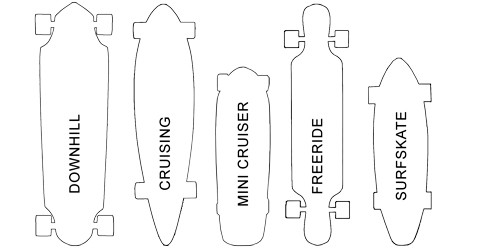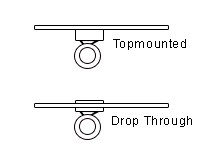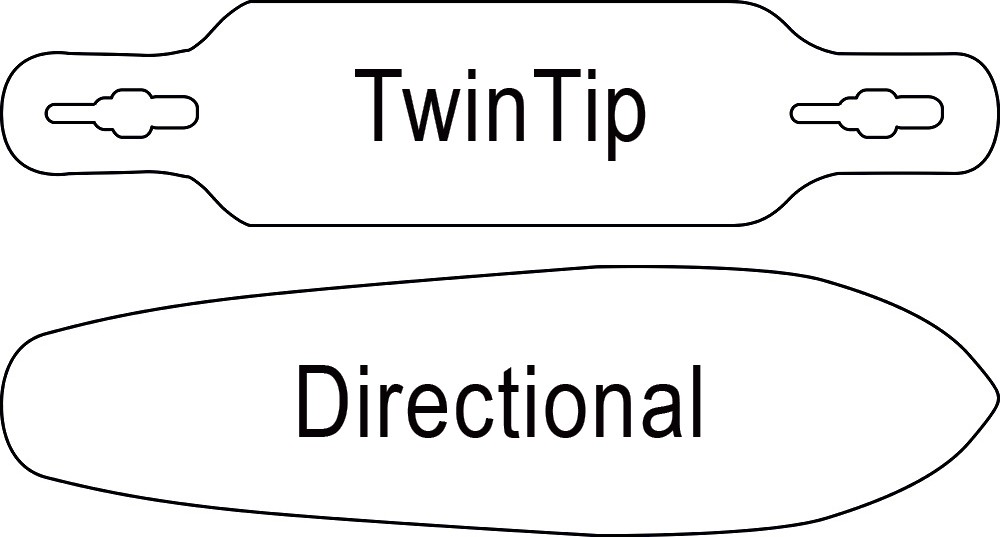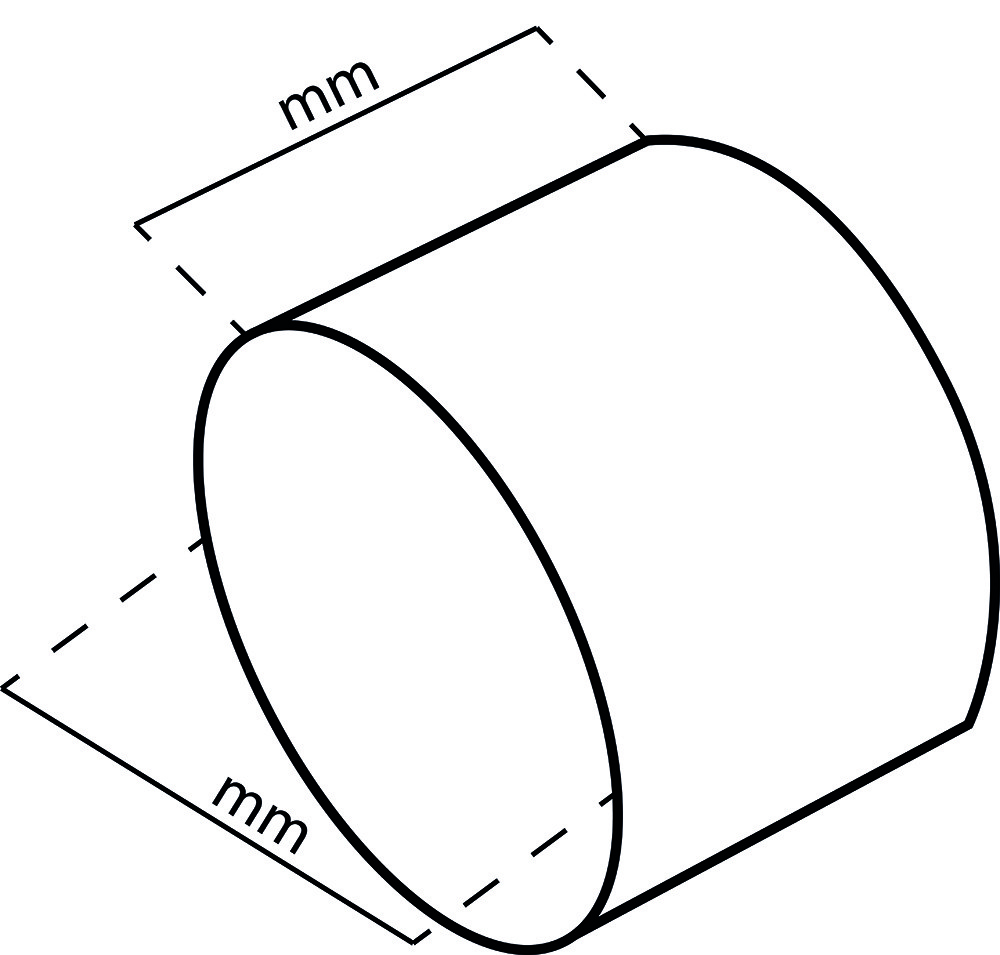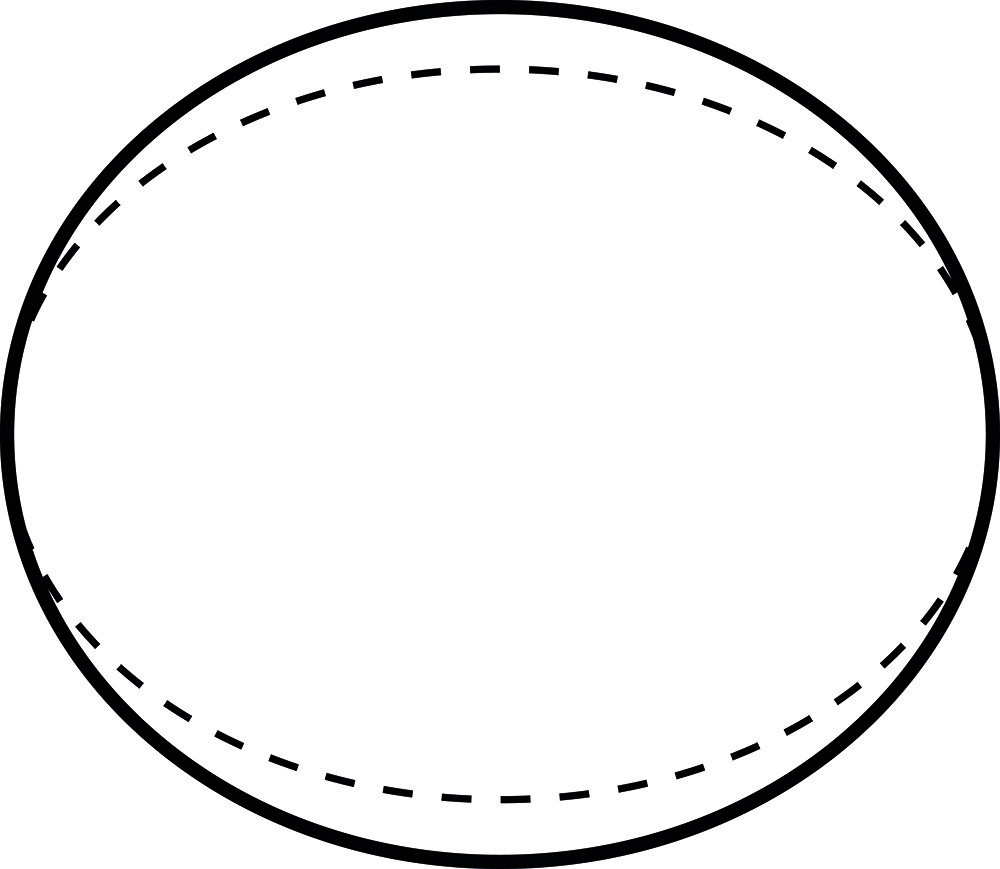Surf Feel / Carving:
Carving is a unique riding style within longboarding that is very similar to ordinary surfing on the water. When carving, you push your body weight alternately toward your heel and toe so you end up skating in an "S" shaped pattern or a soft wave shape. Once you've learned to carve properly, you'll experience extremely good control over your board.
Cruising:
Cruising is probably the most relaxing form of longboarding there is. It is generally about going out and enjoying the worlds beauty and having fun. A good cruise trip usually involves a lot of carving in all kinds of speeds, as well as some freeride and speed check. It can also be when you use your board as transportation, to attend school or at work. There are really no limits in crusing.
Freestyle:
Freestyle longboarding consists largely of technical stunts. Many of the stunts are inspired by the classic and traditional stunts we know from regular skateboarding. These are usually stunts where you pop the board off the ground and do a lot of flips and spins.
Long distance push:
Long distance push is a riding style that, as the name suggests, is about riding longer distances at a time. The riding style requires a board with a comfortable setup and good performance, so it's comfortable and efficient on the long trips. LDP boards are usually very close to the ground as it allows the skater to push it up from the ground without having to dip very much.
Downhill:
Downhill is a highly technical high-speed riding style that requires you to be an expert in longboarding, as it may otherwise be extremely dangerous. It consists of riding downhill on mountains, racetrack areas or similar, while sliding side to side and playing with the speeds.
Length:
The length of the longboard deck has a major influence on the riding characteristics of the longboard, and how stable you stand. Longer longboards are usually easier to stand on than shorter longboards, as this gives you a wider footstep. Generally, longboards with a length of 0 - 32 "are called mini cruisers, while longboards with a length of 33" - 37 "are known as small longboards. Both sizes are best suited for cruising and transportation. Slightly longer boards with a length of 38 "42" are the most regular longboards and they are best suited for carving, freeride and freestyle. The longest longboards range from 43 "- 48" and are called large longboards or dance boards. They can be used for both carving, crusing, freestyle, and downhill.
Width:
Your boards width depends on your footsize. You need to have space for your feet on the board. This also means that the bigger feet you have the wider your longboard needs to be. Boards with more width are often suitable for maneuver where your feet or grip surface is in focus: Sliding, Freestyle, carving. Narrow boards caters more for cruising and transport.
Wheelbase:
The wheelbase is the distance between the two trucks of the board. The wheelbase alone gives the board its capacity of changing direction. Long wheelbase allows more control over your change of direction, which is ideal for downhill and slides. If you want to use your longboard for cruising, carve or downhill a wide wheelbase would be ideal, whereas a short wheelbase would be better for freestyle and city riding, where you take small sharp turns all the time.
Deck material:
The material of the deck is relevant to flex, durability and quality. If you want a flexible longboard, bamboo is the best sollution for you, it is however not very sustainable. For a sustainable longboard you should choose one made of canadian maple. There is a way to make the decks either more durable or more rigid. It involves a a procedure where a layer of either fiberglass or carbon is incorporated in the materials. The thickness of these layers gives the deck more durability or stiffness. There are many different combinations of these materials that can be made, to make the perfect longboard just for you. The best materials are canadian maple mixed with carbon or fiberglass and the bad materials are recycled wood, since this has zero flexibility. Other half bad materials are chinese maple, whicg has very little flexibility as well. En general when speaking about wood, one determines the quality after how many knots and impurities are in it. The fewer the better.
Concave:
Concave is an inverted curvw that extends from edge to edge of the longboard deck surface. The whole point with concave is to give your board a better reaction capability by pulling up the edges of the board so that they are tightly under the skater's feet. In general, concave allows you stand firmer and have a better grip when skating.
Flex:
The flex of a board are an expression of stiffness. Stiff boards have a very fast steering and provides stability and control, which is suitable for Sliding, Freestyle and Downhill. Flexy boards are not very stable, but more comfortable to ride as the deck adapts to your movements. Flexy boards are therefore suitable for carving, freeride and Cruising.
Deck form:
Longboard decks are available in many different forms. One of them is called Twintip. Twintip boards are symmetrical and can ride equally in both directions and is therefore good for Slides, Freeride, Freestyle. Pintail boards are inspired by surf boards, with narrow ends and are suitable for cruising. At last we have Directional boards, which can have different shapes. They are directional as the name indicates, which is often used for Downhill and cruising. Longboards can actually also have kicktails, making it possible to pop a board and thus do tricks etc.
Weight:
The longboards total weight, when assembled. For you to be able to ride, do tricks and other tough longboard maneuvers like sliding and aggresiv riding with quick turns and so forth, you need to have a longboard that isn't too heavy. On the other hand, your longboard shouldn't be too light because light weight longboards often have lower durablity and easily breaks.
Wheel edge:
The edge of the wheel have a greater meaning of your riding style. Wheels with rounded edges are better for street riding and ramps. Wheels with square edges are on the other hand better for longboards used as a transport. In generel when riding feestyle, one should use smal hard wheels with rounded edges. A Longboard used for freeride or cruising however, should have big, soft, square edged wheels.
Wheel diameter:
The size of the wheels should depend on your riding style and what you will use your longboard for. Large diameter wheels are suitable for comfort, speed and grip, while the wheels of small diameter is good for maneuverability and tricks. The width of the wheel determines how much contact you have to the ground. More contact with the ground (wide wheels) provides comfort, stability and grip, less contact with the ground (narrow wheels) provides speed, maneuverability and easier slip for slides.
Wheel hardness:
The hardness of a wheel is measured on the durometer scale which ranges from 0 - 100A. 0 is the softest and 100 is the hardest. Soft wheels provide comfort and less strokes for unevenness on the road. Hard wheels provide speed and provides easier-slip for slides.
Here are some examples of the hardness, you usually see on longboards.
Wheels with a hardness from 78a-80a make your trips smooth while keeping a good grip on the ground. They are perfect for all-round riding.
Wheels with a hardness from 81a-83a are fast and will only have a little resistance from the ground. However, these wheels will last longer than soft wheels and work well with skaters who are looking for more advanced things.
Wheels with a hardness from 84a-86a are quite hard and do therefore not have a very good grip on the ground. They roll super fast and are easy to slide on, but not as comfortable as soft wheels.
Wheels with a hardness of 87a and up are very hard and therefore have almost no grip. They are good at more traditional skateboarding.
Bearings:
Bearings are divided into ABEC. High ABEC values mean that the bearing is made with more precision and therefore better quality. This means that bearings of ABEC-7 value are better than bearings of ABEC-5 value. It is recommended that your ABEC-value is higher for higher speeds and lower if your wheel will have a lot of impact. Bushings also come in different quality levels, and here some bushings are also better for different riding styles.
Truck Size:
Trucks come in various shapes with different angles. Higher angles are designed for more carving turns and lower angles are intended for fewer turns.
Truck mounting:
There are two ways to mount a truck. Top mounted trucks are mounted on the underside of the deck. This is clever because you avoid having the truck in the way of your feet, while skating. The drop-through truck passes through the deck which increases the stability. Top mounted trucks are mostly used for freestyle and cruising boards. Drop through gives the board a lower center of gravity and can be used for all riding styles. Both types of mounting have their pros and cons, but your choice depends a lot on which riding styles you use and how technical the stunts you perform are. If you are snowboarder or surfer and want to have a similar feeling on your longboard, then look for a drop-through truck. However, if you're looking for maximum speed and great response, you should get a top-mounted truck.
Griptape:
Grip Tape comes in many levels of roughness and kinds. The rougher the grip tape is, the better and firmer you will stand on the longboard. However, with rougher grip tape you will have to compromise the longevity of your shoes, since the rougher grip tape means that it will be rougher on the soles of your shoes as well. As mentioned there are different kinds of griptape. One is called clear sand, which is a layer of see through epoxypaint mixed with sandgrains, which then becomes as rough as sandpaper. This type is usually used on longboards where you would like to see the wood through the griptape. The most common griptape is a kind of rough sandpaper with stick on the back, so you can put it on you longboard. Griptape is a necessity on your longboard, otherwise you cannot stand firmly.
